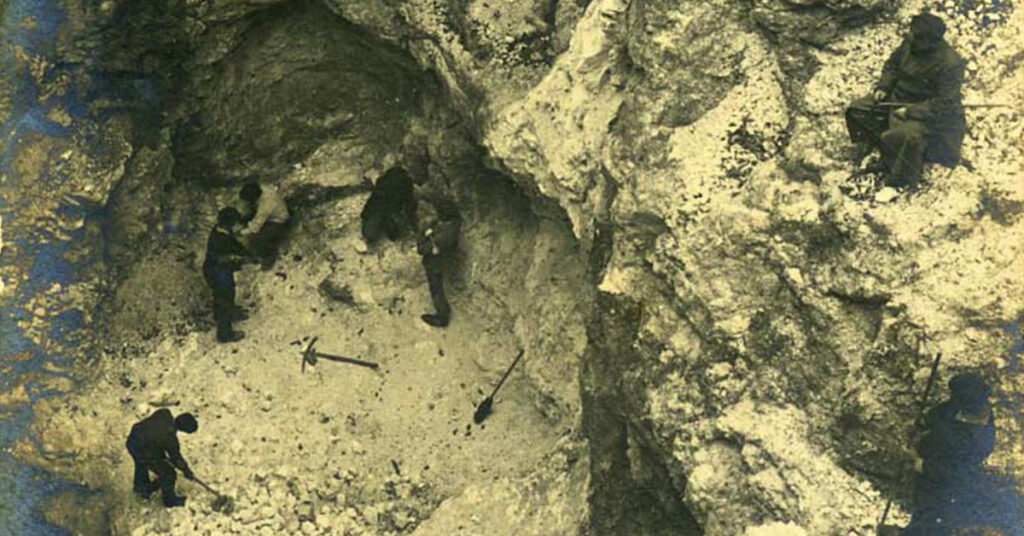Basque ethnography at a glance

Old photograph of the times when “white stone” was extracted by hand (Ouvrard Biarritz – Private collection).
“I have not committed any sin to leave my Land… Is it necessary for autumn to take me away from Luhuso?” wrote the singer Enaut Etxamendi in the autumn of 1971 (Canto de Luhuso). In the middle of summer it was decided to close the Luhuso kaolin (or “white stone”) mine exploitation plant, due to its low profitability. The company closed on July 31, 1971. Two days later, the workers carried out a protest under the motto of “Lan Euzkadin (Work in Euzkadi)”. They had the support of the creators of the Enbata movement, as well as some local elected officials. Despite the fact that the company got occupied and the road to Garazi was blocked, the company was relocated and, over the years, the boulders of the “white stone” mines slowly hid under the ground. Today, those who walk around Luhuso will not find any visible traces. However, by inspecting a little, you can find the holes of the old galleries and tunnels.
In the same way that it has been disappearing underground, this important part of the town’s history has remained alive in the memory of many Luhusoarras during the last 50 years. Argitxu Beyrie, an archaeologist from Itsatsu, recently stated in one of her interventions that “it is difficult to imagine today what the industrial activity of the Errobi valley was during the 19th century, from Banka to Itsasu.” She emphasized the need for archeology to understand the recent historical memory.
We do not intend to discuss the history of kaolin in these lines, but rather mention the initiative that is unearthing the memory of a history of which Luhuso is a part. Anyone who wants to hear the historical testimonies should go to the following link: LUHU-1 – Mintzoak – Portail de la mémoire orale du Pays Basque nord.
Unearth the memory
It has been 50 years since the quarry activity ceased. The memory of that underground exploitation of Luhuso, which lasted a century, would also have been lost if Guillaume Méziat, a theater actor based in the town, had not been interested in it.
Taking the 50th anniversary as a starting point, Guillaume has resumed the recovery of that memory. Since 2021, he has organized the Harri Xuria Eskutan initiative annually. During an autumn weekend, the memory of Harri Xuria is revived through talks, exhibitions and artistic initiatives, trying to bring attendees closer to the place where the mine was located (nowadays a common place for fans of motocross), through an artistic walk. Méziat’s dream is for this initiative to continue for at least another 50 years.
That weekend has become the time to let words express and remember history. Every year, an exhibition made up of photographs and testimonies collected in the Harri Xuri room is presented, and each year new elements are incorporated into the exhibition.
Although kaolin has many benefits (construction, pharmacy…), its most famous use for years and years has been porcelain. Thanks to Guillaume Méziat, the “white stone” once again takes its place in the Luhuso area, remembering that our history is a jewel that has to be taken care of, just like porcelain.
Pantxix Bidart Pla


